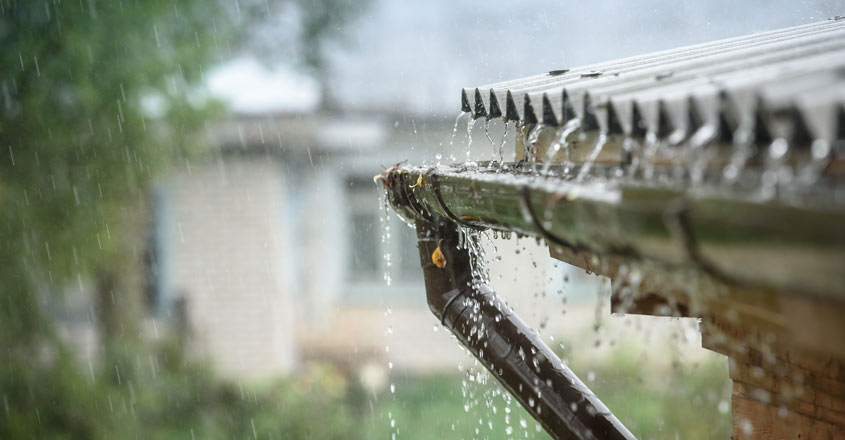Well recharging: The best way to conserve water, yet not many takers in Kerala

Mail This Article
Kerala receives an average annual rainfall of 3000 mm. Yet, the state faces severe water scarcity between February and mid-May every year. Wells go dry in many places and water become unavailable to thousands of people. The situation is expected to persist in the coming years too.
It is estimated that Kerala needs 5,823 million cubic metres of water (one cubic metre is 1000 litres) additionally over the existing resources every year to meet its needs. About 50 per cent of the population in urban areas and 80 per cent in rural areas depend on open wells for the domestic water needs in the state.
Though environmentalists and government agencies have been actively campaigning for rain water harvesting, it has not made any major impact in Kerala. Only very few number of households have actually implemented the system.

“One reason may be the lack of urgency as the intensity of water crisis is not felt in rainy season. It is the typical mass psychology of people in Kerala to skirt long term vision to take precautionary measures against disasters and calamities,” said K E Vinodkumar Assistant Development Commissioner, Pathanamthitta, who has supervised several rainwater harvesting activities under Mahatma Gandhi National Employment Guarantee Scheme (MGNREGS), in the district.
Top priority projects

The state government has been top priority for rain water harvesting and well recharging.
“It is the easiest and cost-effective water conservation method that can be done under MGNREGS. Those who are interested should approach the local bodies,” says Vinodkumar, “We have successfully installed the well recharging system in several places. People are showing interest to install it now because it is easy to install. It requires less labour, materials, money and time. Compared to that the benefits are huge.”
The approximate cost for setting up a well recharge system is Rs 4000.
How to recharge the well?
There are two ways to recharge the well. One is channelising the rain water from the rooftops to a filtering unit and then allowing it to flow into the well. The other is to dig rain pits near the well and allow the rain water in the vicinity fall into the pits. The water will subsequently seep into the well.

“One of the most significant factor of well recharging is that it will be beneficial not only for the individual household, but also for surrounding topography as it will raise the level of the water table in the area,” says Vinodkumar.
Besides, well recharging helps reduce E-coli bacteria in waterbodies. “The only way to cleanse wells with high E-coli bacteria is to recharge them with rain water,” he said.
Project Mazhapolima
Mazhapolima is a well recharge programme, introduced by environmentalist Jos C Raphael, a native of Thrissur. An alumni of London School of Economics, Jos started the project in Kerala after recognising immense bounties of rain and soil in Kerala.

“We collect rooftop rainwater through pipes with filters at the end. The filtered rainwater is directed to open dug wells to replenish the aquifers. Such recharged wells ensure adequate water to last the summer days,” says Jose, “The system helps reduce the salinity, turbidity and colour of the well water in coastal areas.”
The project was initiated in early 2000s when Jose noticed innumerable wells across the state and a lot of rain. Ironically, there was acute shortage of drinking water in summer. “I have now spent my lifetime promoting water conservation programmes,” says Jose, “However, it is not getting popular enough.”
As to what stops the programme from instant acceptance Jos says it's primarily the lack of awareness and secondly people are skeptical about the purity of water thus collected from the roof. But the fact is the rooftop is cleaned before the the first rain in June by which impurities are cleared out and it's further cleaned in a filtering unit before it's discharged into the well. Well recharging is a significant step towards making well water less contaminated, reducing the presence of E-coli, he adds.
“The system Mazhapolima is not something we have invented,” Jose says, “we are only implementing a water conservation method devised by the Centre for Water Resources Development and Management (CWRDM). Though it focuses mainly Thrissur district, Mazhapolima provides technical know-how and guidelines to needy households in other districts too.
“Malayala Manorama with its water conservation campaign, Palathulli, has been supporting us to propagate our rain water harvesting programme and its benefits,” says Jose.
Types of rain water harvesting

Water Butt
Water Butt is the most basic and universal form of rainwater harvesting. This is the collection of rain water in a container directly or that falls from the roof. It is mainly used for washing and gardening.
Directly Pumped
The most commonly used system of rainwater harvesting, it is mainly used for domestic purposes. In this, the rain water is stored in an underground tank and then it is pumped for direct use or to containers to be be used later.
Indirect Gravity
In this system, the harvested rainwater is first pumped to a tank placed at an elevated level. The water is then allowed to flow to taps and other water supply outlets. In this system pumping is required only when the tank placed at the higher level requires filling.
Indirectly Pumped
In this rain harvesting system the collected rain water is pumped to a tank placed at any level and a booster pump is employed to provide pressurised water supply to the outlets. This offers a flexibility of supplying water to the building any time till there is water available in the main storage tank.
The concept of rain water harvesting took shape in Kerala with the introduction of a project called 'Varsha', launched in 2002 by the then irrigation minister, T.M Jacob. But, years on, the the state has made no progress in this direction. The project 'Varsha' is now long forgotten and the abandoned water tanks, built as part of the project, lie unseen at various locations as fossil remains of an unknown era.


